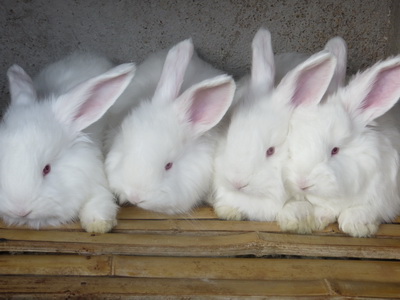长毛兔在养殖方面更加注重健康养殖化!
 发布日期:2023-10-27
来源:http://www.myxinhua.com 发布人:admin
发布日期:2023-10-27
来源:http://www.myxinhua.com 发布人:admin
以下是一篇关于长毛兔的文章:
The following is an article about the long haired rabbit:
长毛兔,学名安哥拉兔,原产于土耳其首都安卡拉(旧称安哥拉)。安哥拉兔从品系上分,有五种安哥拉兔毛色,即全白、全黑、全黄、黑白相间和棕色。安哥拉兔的毛长而浓密,有的可超过5厘米,因此,安哥拉兔又有“长毛兔”之称。
Angora rabbit, the scientific name of Angora rabbit, is native to Ankara, the capital of Türkiye (formerly known as Angola). Angora rabbits are divided into five types of Angora rabbit fur colors based on their strains, namely all white, all black, all yellow, black and white alternating, and brown. Angora rabbits have long and dense fur, some of which can exceed 5 centimeters, hence they are also known as "long haired rabbits".
长毛兔的皮毛具有很高的经济价值。由于安哥拉兔的毛长而柔软,质地良好,是纺织业的重要原料之一。用它制成的纺织品,其保暖性、弹性以及舒适性均好于其他类型的毛织品。此外,安哥拉兔的皮毛还可用于制作皮衣、围巾、帽子等。
The fur of long haired rabbits has high economic value. Due to the long and soft fur and good texture of Angora rabbits, it is one of the important raw materials in the textile industry. The textiles made from it have better warmth retention, elasticity, and comfort than other types of woolen fabrics. In addition, the fur of Angora rabbits can also be used to make leather clothes, scarves, hats, etc.

在养殖方面,长毛兔的饲养需要较高的技术水平和管理能力。由于其毛长而浓密,需要经常梳理和修剪,以保持毛发的清洁和光泽。此外,长毛兔对环境的温度和湿度要求较高,需要提供适宜的生活环境。在饲料方面,长毛兔需要高营养的饲料,以满足其生长发育的需要。
In terms of breeding, raising long haired rabbits requires a high level of technical skills and management capabilities. Due to its long and dense hair, it needs to be regularly combed and trimmed to maintain its cleanliness and luster. In addition, the long haired rabbit has high requirements for environmental temperature and humidity, and needs to provide a suitable living environment. In terms of feed, long haired rabbits require highly nutritious feed to meet their growth and development needs.
总的来说,长毛兔是一种具有很高经济价值和饲养价值的动物。在养殖过程中需要注意饲养管理、环境控制以及疫病防治等方面的问题,以保证其健康生长和产毛。
Overall, the long haired rabbit is an animal with high economic and breeding value. During the breeding process, attention should be paid to issues such as breeding management, environmental control, and disease prevention and control to ensure its healthy growth and high-quality wool production.


 发布日期:2023-10-27
来源:http://www.myxinhua.com 发布人:admin
发布日期:2023-10-27
来源:http://www.myxinhua.com 发布人:admin